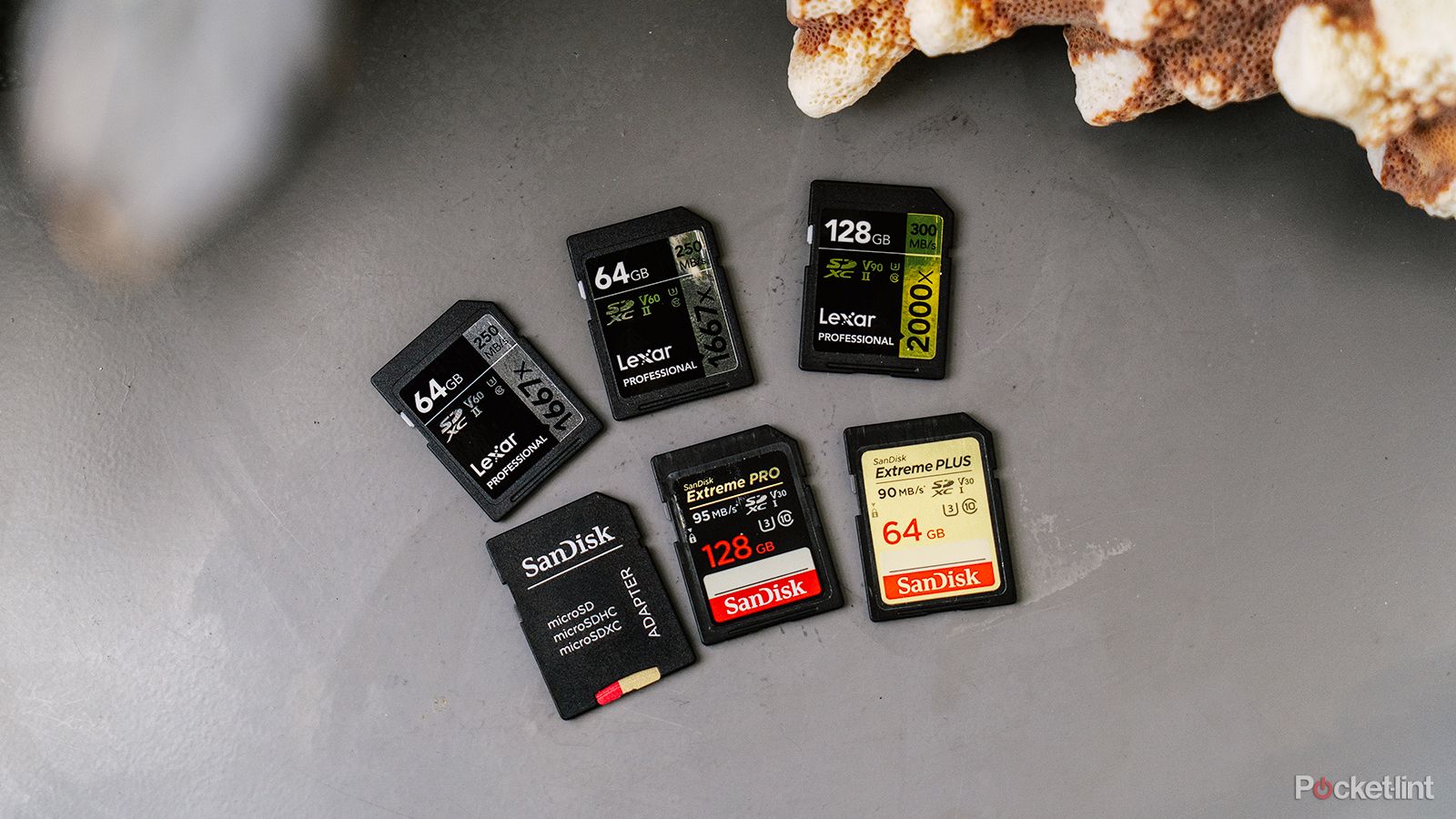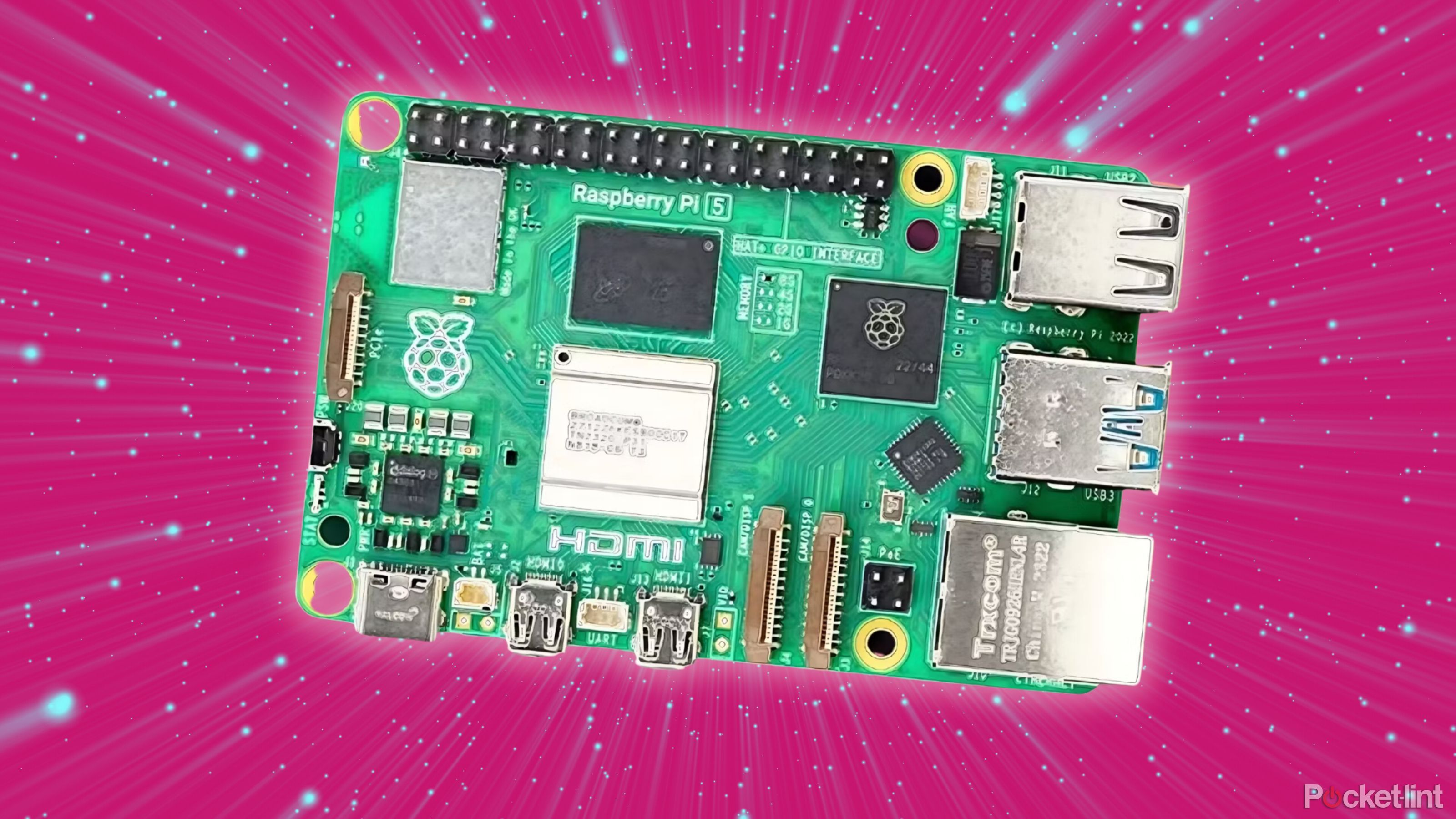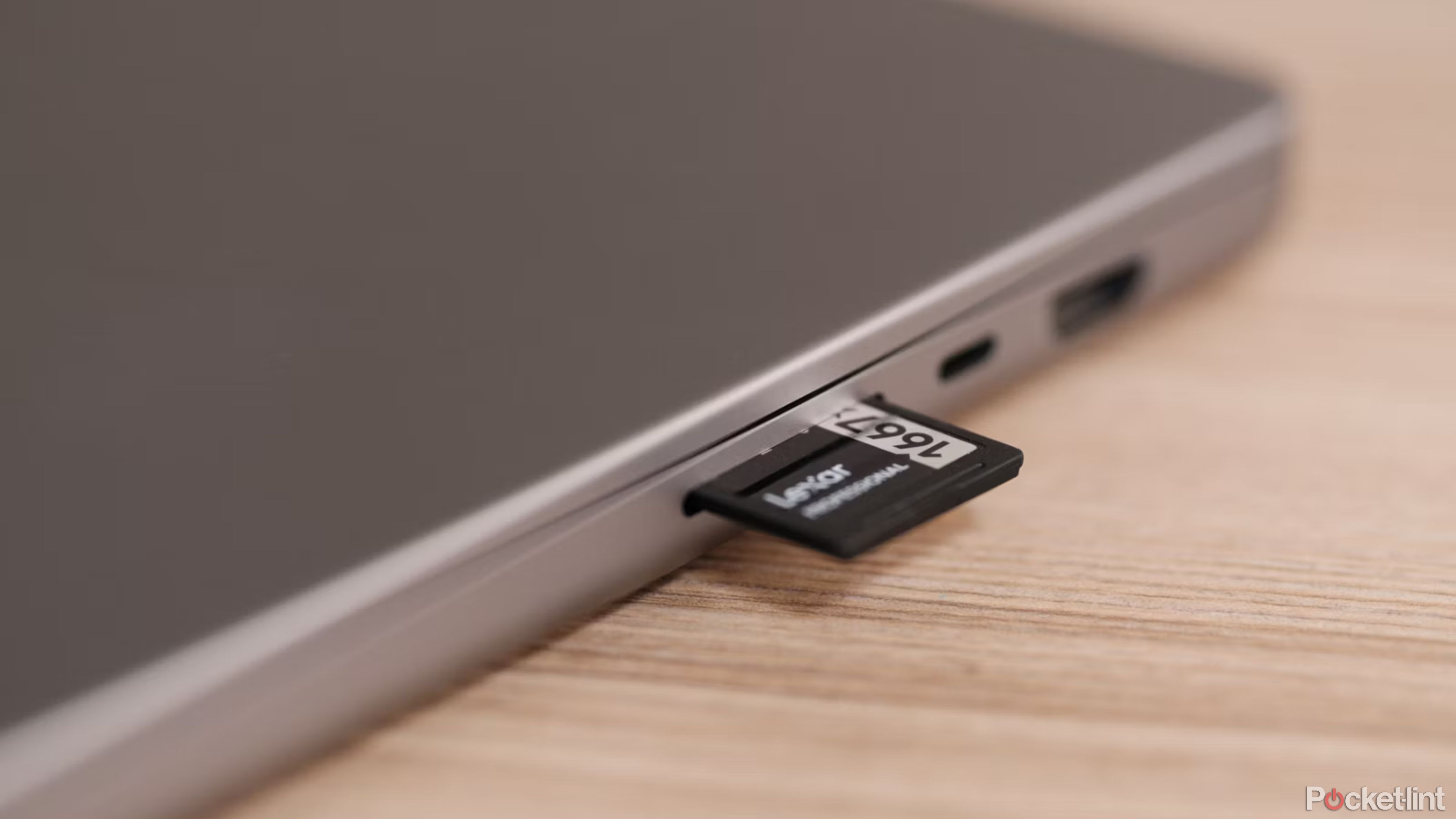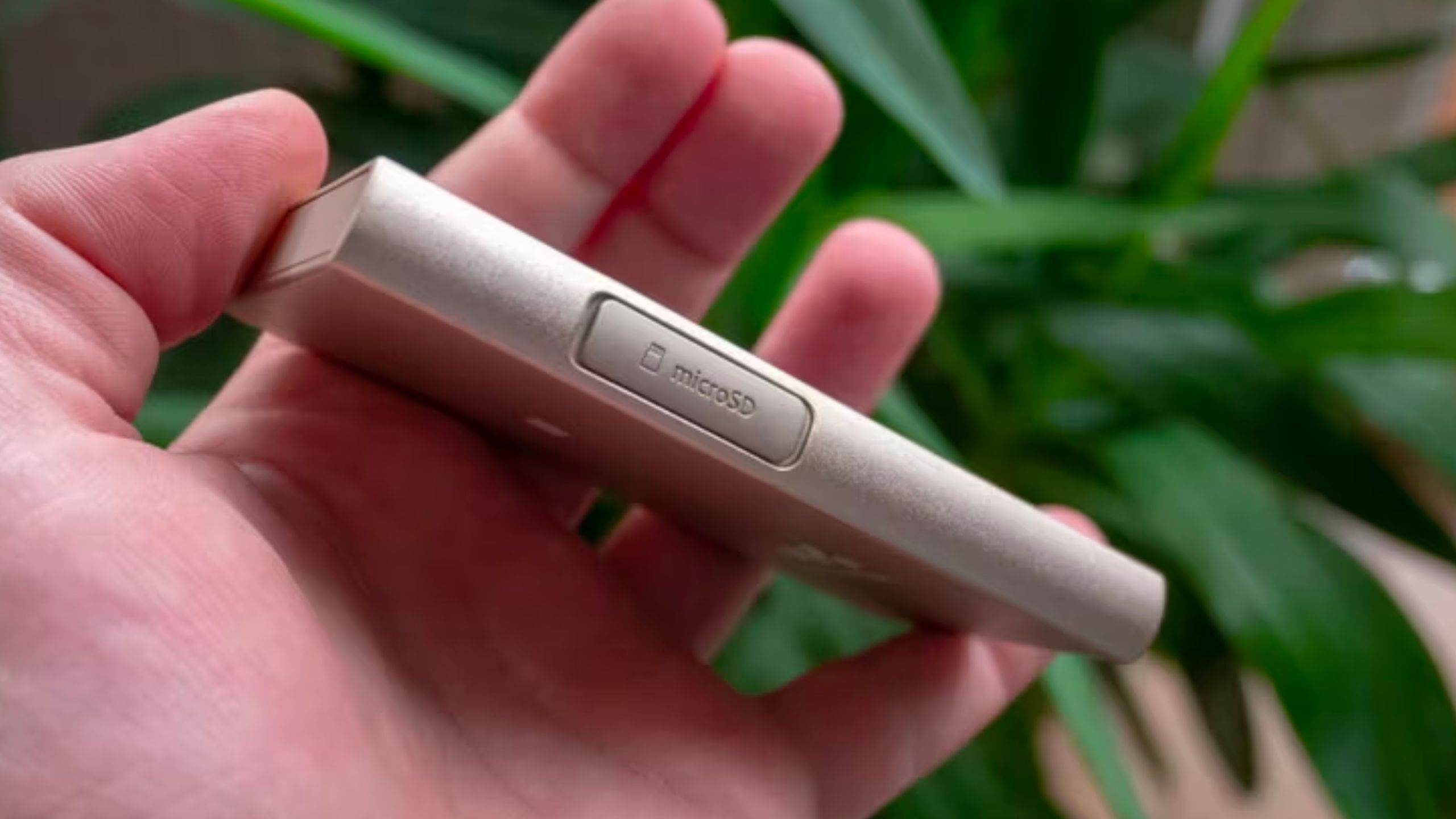Summary
- Storing photos in a digital frame is a great use case.
- You can print wirelessly from an SD card.
- Use an SD card as a boot drive to restore a faulty OS.
While cleaning out my desk recently, I found a few old SD cards. At first, I thought about throwing them out, but then I remembered I could probably figure out a few useful things to do with them. It’s common to have at least a few SD cards lying around, and whether you use them for extra storage on the Nintendo Switch, an Android phone (as long as they’re microSD), or for just taking photos with your favorite camera, they can still have a purpose, even if they’re slow.
You might be surprised by how you can re-purpose them. From using them as a portable media storage device to running an embedded system or emulator, here are all the various ways you can still use an old SD card that’s been collecting dust in a drawer in your desk.
Related
How to format an SD card or microSD card: 6 different methods
Before you start using that SD card or microSD card, you’re going to want to format it. Here’s how, six different ways.
Store your favorite photos in a digital frame
Put your favorite photos on display
SD cards have been one of the most compact physical ways to store media files for quite a while now. If you’re a photographer, there’s a good chance you have a ton of SD cards, many of which contain your favorite photos. While you should back these up to an external drive for posterity’s sake, you can also drop an SD card with your favorite photos on it into a digital photo frame.
The best digital photo frames feature high-quality resolution displays, and some even include built-in speakers that can play videos. If you have videos captured directly onto an SD card, this can be a great way to put your favorite videos on display in your home.

Related
The iPhone Air could finally hit your pocket later this year
Apple reportedly has a lot of new product launching this year, including a new Apple Watch SE and the iPhone 17 Air.
Print directly from an SD card
Wireless printing with an SD card
Sure, you can print via Wi-Fi, but did you also know that many printers feature a physical SD card slot? If your printer has an SD card reader, you can save your print job to your SD card, plug it into your printer’s SD card reader, and print directly off it. This works great with photos, and you can even use this method to print images at a photo processing booth at retailers like Walmart.

Related
4 reasons I gave up on Apple TV+ (and what I’d rather spend that $10 on instead)
I’ve cancelled Apple TV+. Here’s what finally convinced me to hit unsubscribe and all the alternatives I’m turning to for my streaming needs.
Use an SD card as a boot drive
If you are tinkering with a Raspberry Pi, an SD card can host Raspberry OS
If you’re considering tinkering around with a Raspberry Pi, you should know beforehand that an SD card is required with nearly every Raspberry Pi model to run Raspberry OS and act as your device’s storage drive. There’s a wide range of different operating system versions available for the Raspberry Pi, but they all have one thing in common: you’ll need to boot them from an SD card.
Whether you’re creating a miniature media center or your first DIY project with a Raspberry Pi, consider using those old SD cards you have lying around to boot your device (as long as they’re somewhat fast). You’ll need to format your old SD card to use it as your Raspberry Pi’s storage, so make sure you back up everything beforehand. Pocket-lint has an easy-to-follow guide about how to set up your Raspberry Pi, which you can check out here.

Related
I can’t believe Apple still hasn’t fixed the iPhone’s alarm
Some iPhone users are having issues with their alarms going off at the wrong time or not making any sound.
Encrypted file systems
Keep your system even more secure
It never hurts to be extra careful if you work with sensitive information. Even though most modern operating systems have stepped up their security in recent years, you can get some additional security and peace of mind by using your old SD cards to store, transfer, and share encrypted files. The compact nature of SIM cards makes them great for hiding away in hidden compartments in your bag or case, adding an additional layer of data security.
When using an SD card with Windows, you can make your data more secure by adding a password or PIN and you can even hide your text documents in image files. Like with any encrypted storage system, you’ll need to ensure you don’t lose your password. While there are ways to recover deleted or lost data from an SD card, there’s no perfect recovery solution for encrypted storage devices.

Related
When will Apple release the new iPhone SE?
The new iPhone SE is expected to be released soon and could get a name change.
Create a bootable SD card
Boot an OS from an SD card for easy recovery
While you may think you only need to use the SD card slot on your PC if you work with videos and photos, you can also use the SD card slot to boot Windows from an SD card for troubleshooting purposes. You can do this by creating a bootable version of Windows on an SD card. You’ll need to format your old SD card and convert it to NTFS, which can all be done with the built-in Windows Disk Management application.
I don’t personally recommend running an OS like Windows or Mac off of an SD card, as the speed will be relatively slow, but it’s a great solution for problem-solving if your laptop won’t boot up normally.

Related
Is it time for the humble SD card to make its big consumer tech comeback?
SD cards were once all the rage in the consumer market — slots for containing the little flash storage units formerly adorned smartphones, tablets, laptops, and a variety of other tech products. These days, you’ll struggle to find a computer or phone with in-built support for expandable storage, with major tech companies pivoting hard towards cloud-based solutions. The last great bastion of the SD card is perhaps the digital camera, which is a product category that isn’t nearly as popular as it once was. The truth, however, is that the inherent utility of SD cards is undeniable: they’re physically small, they’re resistant to damage, and they’re reasonably speedy when it comes to day-to-day file transfers. The price-per-storage ratio has continued to decrease in recent years as well, which makes the SD format an affordable entry point for general-purpose storage expansion. Apple — a company infamous for its haphazard SD support — brought back the card reader when it redesigned the Ma
Trending Products
![cimetech EasyTyping KF10 Wireless Keyboard and Mouse Combo, [Silent Scissor Switch Keys][Labor-Saving Keys]Ultra Slim Wireless Computer Keyboard and Mouse, Easy Setup for PC/Laptop/Mac/Windows – Grey](https://m.media-amazon.com/images/I/415Vb6gl+PL._SS300_.jpg)
cimetech EasyTyping KF10 Wireless Keyboard and Mouse Combo, [Silent Scissor Switch Keys][Labor-Saving Keys]Ultra Slim Wireless Computer Keyboard and Mouse, Easy Setup for PC/Laptop/Mac/Windows – Grey

AOC 22B2HM2 22″ Full HD (1920 x 1080) 100Hz LED Monitor, Adaptive Sync, VGA x1, HDMI x1, Flicker-Free, Low Blue Light, HDR Ready, VESA, Tilt Adjust, Earphone Out, Eco-Friendly

TopMate Wireless Keyboard and Mouse Ultra Slim Combo, 2.4G Silent Compact USB Mouse and Scissor Switch Keyboard Set with Cover, 2 AA and 2 AAA Batteries, for PC/Laptop/Windows/Mac – White

HP 2024 Laptop | 15.6″ FHD (1920×1080) Display | Core i3-1215U 6-Core Processor | 32GB RAM, 1.5TB SSD(1TB PCIe & P500 500GB External SSD) | Fingerprint Reader | Windows 11 Pro

Thermaltake View 200 TG ARGB Motherboard Sync ATX Tempered Glass Mid Tower Computer Case with 3x120mm Front ARGB Fan, CA-1X3-00M1WN-00

SAMSUNG FT45 Sequence 24-Inch FHD 1080p Laptop Monitor, 75Hz, IPS Panel, HDMI, DisplayPort, USB Hub, Peak Adjustable Stand, 3 Yr WRNTY (LF24T454FQNXGO),Black

Dell Inspiron 15 3520 15.6″ FHD Laptop, 16GB RAM,1TB SSD, Intel Core i3-1215U Processor(Beat i5-1135G7), SD Card Reader, WiFi, Bluetooth, Webcam, Win 11 Home, Alpacatec Accessories, Carbon Black
![Dell Inspiron 15 3000 3520 Business Laptop Computer[Windows 11 Pro], 15.6” FHD Touchscreen, 11th Gen Intel Quad-Core i5-1135G7, 16GB RAM, 1TB PCIe SSD, Numeric Keypad, Wi-Fi, Webcam, HDMI, Black](https://m.media-amazon.com/images/I/51O3nNfyJPL._SS300_.jpg)






